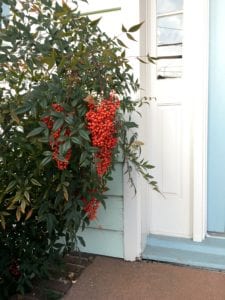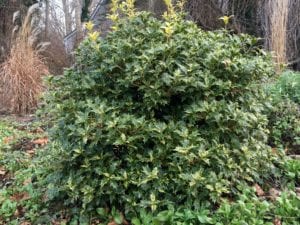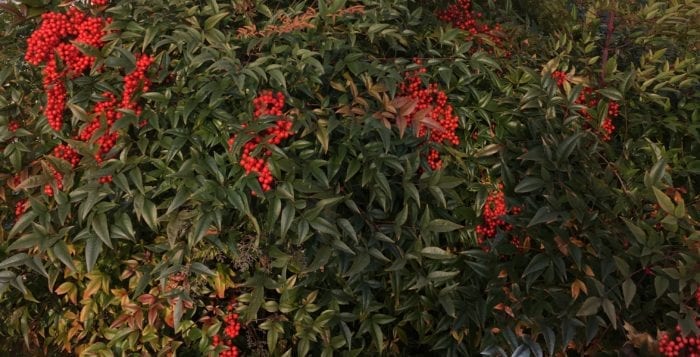By Kyrnan Harvey
A deer tragically impaled itself last month on the spears of a metal fence — way west in Glen Cove. But perhaps fences are not the best strategy to deter the white-tailed herbivores, especially if your fencing is that ubiquitous and regrettable closed-top black aluminum or only 4 feet high.

The first 25 years of gardening for me were mostly further west of Glen Cove, but even in my gardens in Oyster Bay and Huntington Bay deer were then not a problem. If your backyard is enclosed all around by 6-foot stockade fencing, then you can reliably garden with a fully free hand by planting aucubas, rhododendrons and azaleas; hostas, roses and hydrangeas; and tulips, daylilies and coralbells.
But, if you are like me and see fresh deer hoof prints and droppings every day, see deer gracefully browsing at dawn or dusk once a week, and can’t plant a tree without its trunk getting destroyed by rutting bucks, what deer-proof planting strategies can you employ if you really still want to have a garden?
Let’s begin with plants that establish the structure of the garden, plantings that, when all else is bare from November through March, articulate garden spaces and dictate how we walk through the garden and that enhance and enliven the winter landscape.
Privet for screening hedges: Only semievergreen at best, but privet is 100 percent deer proof, whereas arborvitae and yew and euonymus will be heavily browsed, Japanese holly moderately. Plant privet close (12 to 18 inches apart), and in a few years it will be dense enough to obviate penetration and tall enough to prevent jumping. Add gates where desired.
Boxwood, for low hedging, rhythm and winter green, is 100 percent deer proof. Avoid the dwarf English boxwood Buxus sempervirens ‘Suffruticosa’ of yesteryear, beautiful as old billowing plants can be, because of boxwood blight. There are numerous other options, and I will elaborate in a future column.
Inkberry (Ilex glabra) is a fine, dark-green leaved alternative to Japanese holly, looser, less stiff and less dense, and thus more casual than boxwood too. Deer do not touch it.
American holly (Ilex opaca) is a tree, with the spiny leaves (don’t plant it poolside!) and red berries (on female plants only). These will self-seed, even in shade, and are, unlike other large-leaved hollies like the beautiful “blue” hollies and the English and Chinese hollies, 100 percent deer proof.

Osmanthus is in the olive family but is mistaken for holly because of its spiny leaves. There is a variegated Japanese cultivar called ‘Goshiki,’ which translates as “five colors” and which has recently become readily available. It is a useful broad-leaved evergreen, the gay coloration of which (creamy- gray- and yellow-green with new leaves of pink) is not as gaudy as it sounds and thus a welcome presence to any garden setting in all seasons — and unappetizing to buck and doe alike.
Clump-forming bamboo (Fargesia) by definition does not run and is not invasive. It is much less tall but with the distinctive evergreen bamboo leaves. These will, in just a few years, present a dense, substantial, voluminous mass of deer-proof greenery.
Heavenly bamboo (Nandina domestica) is a member of the barberry family, unrelated to the graminaceous bamboos. Its leaves only superficially resemble them, and it bears huge trusses of bright red berries. Birds do not touch them, and they last right through the winter.
Ornamental grasses do well where there is an abundance of sun. See my first article in this space (Sept. 12, 2017). Where there is shade, the wonderful Japanese forest grass Hakonechloa does well. Granted grasses are not evergreens, but they provide winter interest, so I don’t cut them down until March.
Well now, there are actually quite a few excellent deer-proof plants for the winter garden. Why do I complain?
Kyrnan Harvey is a horticulturist and garden designer residing in East Setauket. For more information, visit www.boskygarden.com.
All photos by Kyrnan Harvey





